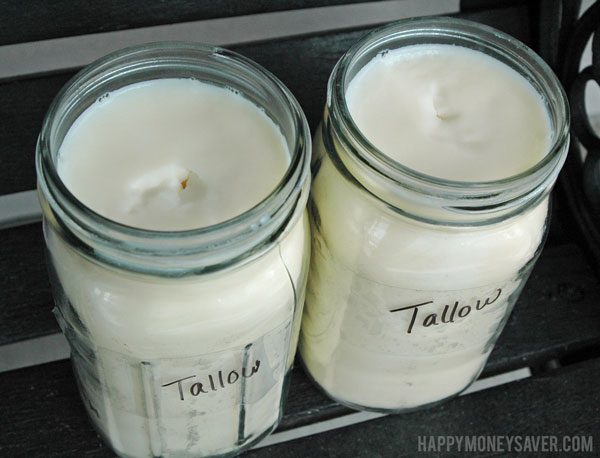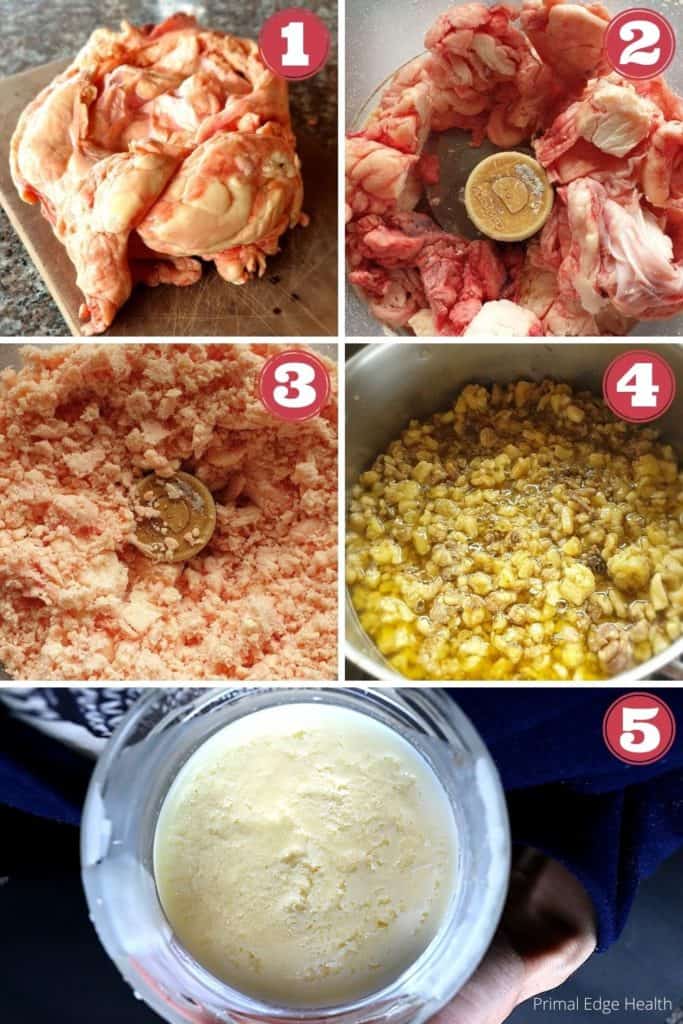
For my big 10 quart crockpot I use around 3 TBSP or so of salt and around 6-8 cups of water. It will heat faster and more evenly like this.

Add all the chopped suet to the pot and set it over low heat.
How to render beef fat. Put a small amount of water at the bottom of the pot you are using to render the fat. Just enough to barely cover the bottom. This prevents the fat from browning as we begin to heat it up.
Turn the pot on a medium low heat and let the fat gently warm up and begin to liquify. Cut fat into 1-2 inch portions. Place into a large saucepan or pot and place over low heat for a few hours stirring occasionally.
After the beef has rendered while it is still hot carefully strain. Subscribe to our YouTube Channel. Growing up there was always a tub of beef fat in the kitchen for cooking and frying.
Every once in a while Gran would go to the butcher or abattoir and get some muscle fat trimmings that shed render down in the oven and then use over the next month or two. The first step is to cut away all pieces of meat from the fat because it can spoil the tallow. Put all the fat pieces into a stockpot and add enough water to reach the top of the fat.
Simmer the fat on low for a few hours until the fat starts to shrivel. Stir it around every 20 minutes or so. Growing up there was always a tub of beef fat in the kitchen for cooking and frying.
Every once in a while Gran would go to the butcher or abattoir and get s. Place the fat into your pan then add enough water to cover the bottom of the pan by about half an inch. Place the pan over a medium flame until the water starts to boil then turn heat down to low.
Cook gently for 1-2 hours stirring every so often until most of the fat has rendered. Pour into your jars OR line baking pans with parchment paper or waxed paper and pour the liquid fat into the pans. Allow it to harden completely.
If you are using fat from a beef-breed animal Angus or Hereford for example your tallow should turn a creamy white as it cools. Not Just Any Fat. Tallow is not just any old beef fat however.
It is the rendered form of suet which is the nutrient-rich beef or mutton fat found around the organs particularly the kidneys. It is the highly prized nourishing fat used in pemmican a traditional food used by Native Americans to survive harsh winters. How to render tallow For rendering you just toss your raw beef fat also known as beef suet into the crockpot and add some salt and plenty of water.
For my big 10 quart crockpot I use around 3 TBSP or so of salt and around 6-8 cups of water. You can adjust these amounts depending on how much fat youre rendering. Therefor the fat that I am producing today is known as beef tallow.
Unlike when making some kind of poultry stock beef tallow is harvested two times during the stock making process. When making beef stock you first roast the bones. During roasting a lot of fat is rendered from the marrow.
Today Rachel and I demonstrate how to render beef tallow. Though it takes time this easy way to render tallow allows you to have a cup of coffee as the fat. Best uses for rendered beef fat.
I rescued more than five pounds of beef trimmings that were about to be thrown away by my local fancy-schmancy all humanely raised mostly grass-fed etc butcher. Im in the process of rendering it but I dont have any good ideas what to do with beef fat as opposed to pork fat. Rendering is a slow process of melting the fat.
Do not boil the rendered fat and be aware that rendered fat as oil will be flammable so use appropriate caution if rendering suet in a gas oven or near any open flame. 3 Check the suet every hour to make sure it is meltingbut not boiling. Add all the chopped suet to the pot and set it over low heat.
This is the dry method of rendering beef fat so do not add water. If you are on the stove-top keep the flame low so as to melt the fat but not burn it. If you choose to use a slow cooker or crock pot turn the heat on low.
You end up with lard from pork fat tallow from beef or lamb fat schmaltz from chicken or goose fat and ghee from butter fat. Despite all their different names the process is the same no matter what fat you use. Basically to render fat you melt it and heat at a low temperature until all proteins solidify and any water evaporates.
If you dont have one you can cut it into smaller hunks and pulse it in your food processor until it resembles ground beef. It will heat faster and more evenly like this. Once you have done this put the ground fat in your slow-cooker and turn it on low.
You want it to heat slowly so it will not burn. Gather the beef fat in a large stock pot and heat to a low simmer. Low and slow temperatures while you render or the fat will result in a browned tallow with a funkier flavor and it wont be as white when it cools.
Slowly simmer to render the beef fat. During the cook time you will notice the fat slowly starts to render and cook. To begin source some high quality beef fat.
100 grass fed is the most ideal because the nutrient content is the highest. A local Weston A. Price chapter is a great resource in locating farms that raise grass fed beef.
Once you have some fat youll grind or cut it. Place all of your fat in a roasting pan and add approximately 13 cup of water for every pound of fat. Eventually the water will evaporate but in the meantime it will keep the fat from sticking to the pan before the fat begins to melt.
Place your roasting pan uncovered in an oven set at 250⁰ F. After 30 minutes in the oven stir.